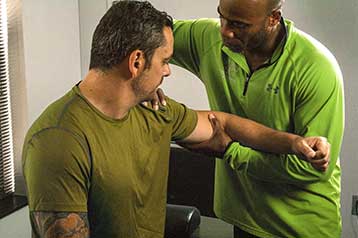YOU ever wonder why you get winded the first few moments of a work out? Most likely because you did not warm up! The blood contains, fat, plasma, red cells, white cells, natural killer cells, sugars etc; it is an impressive concoction that is truly awesome when you consider the function of each blood component. Anyhow, there is hemoglobin, (HG) that circulates in the blood. The HG carries oxygen, (O2) throughout the blood stream. Now this is where the warm up gets interesting: When you begin your warm up he HG ‘gives up’ its O2 so it, the O2, can get shuttled to the muscle where it gets used to prepare the muscle for the intense work ahead. If the HG does not give up its O2 then there is no oxygenated blood for the muscle and you feel yourself breathing harder than normal. When you jump right into an activity the muscles are actually ‘starved’ of O2 because the muscles have not warmed up enough. Who knew!?

Another interesting thing happens in the muscles during a warm up. The nervous system sends a volley of impulses to [afferent] and from [efferent]the brain all day. When you begin to warm up, these impulses speed up and adrenaline begins to flow, the muscle and bone joint nerve endings prepare to distribute loads that are then transmitted to the tendon which is attached to bone then the session begins!Of course I have simplified things a bit, but basically that is what is happening. So if you want to reduce your risk of injury: W
Perhaps the most important feature of a warmed up muscle is its capacity to burn fat more efficiently than a cold muscle. Fat is released during stress. The stress of sudden intense exercises deluges the blood stream with fatty acids. A cold muscle won’t ‘burn’ the fat and therefore that fat ends up in places it is not wanted: the arteries!

So in summary, just know a warm-up is important because:
- Provides O2 to muscle
- Enhances coordination
- Reduces risk of injury
- Speeds up combustion of fatty acids and glucose
